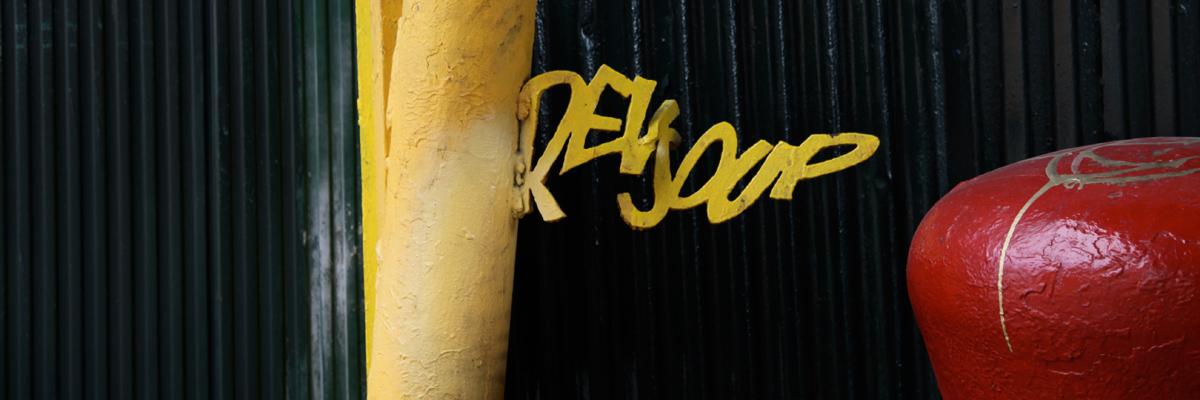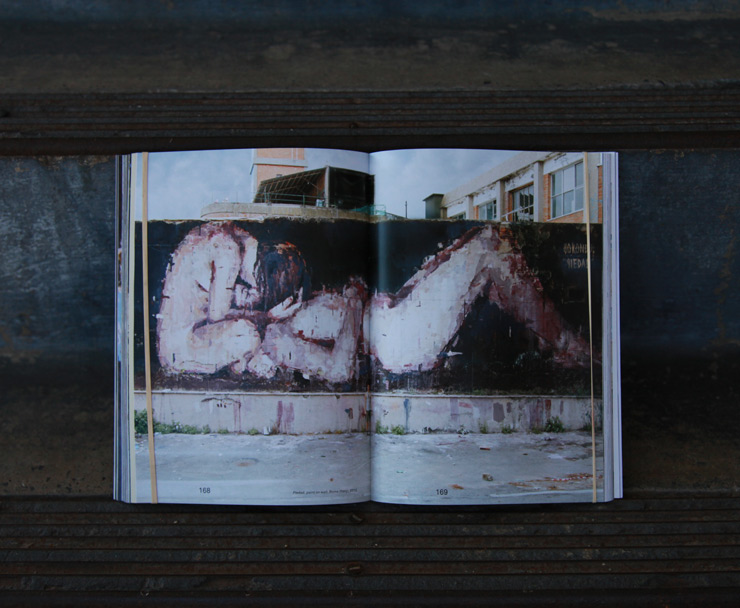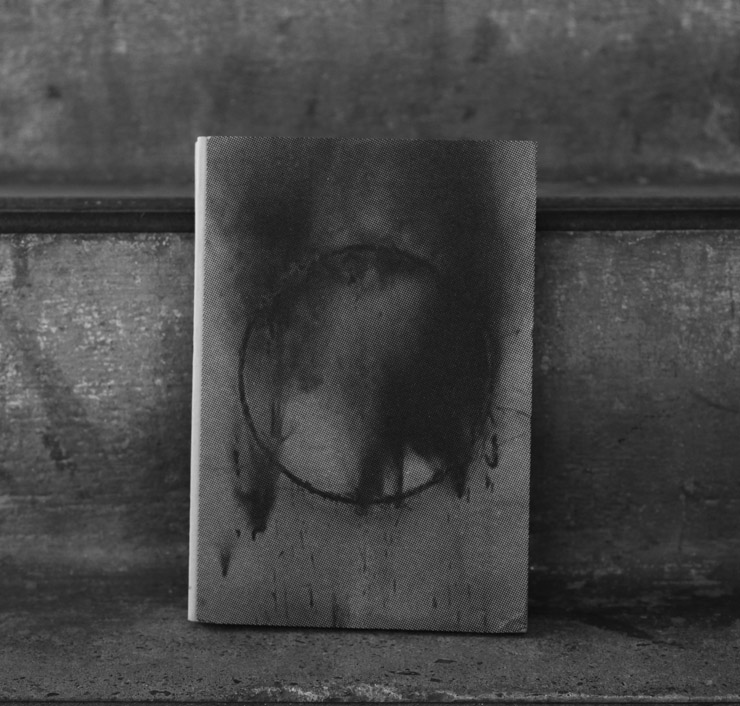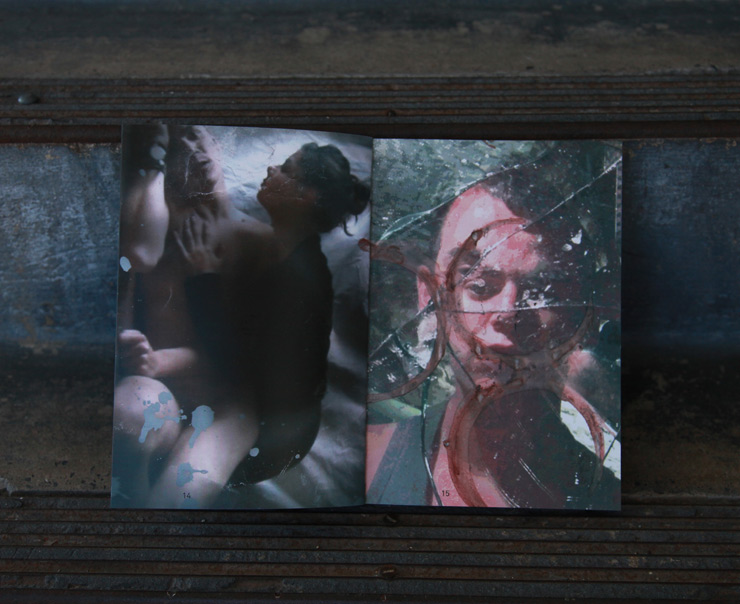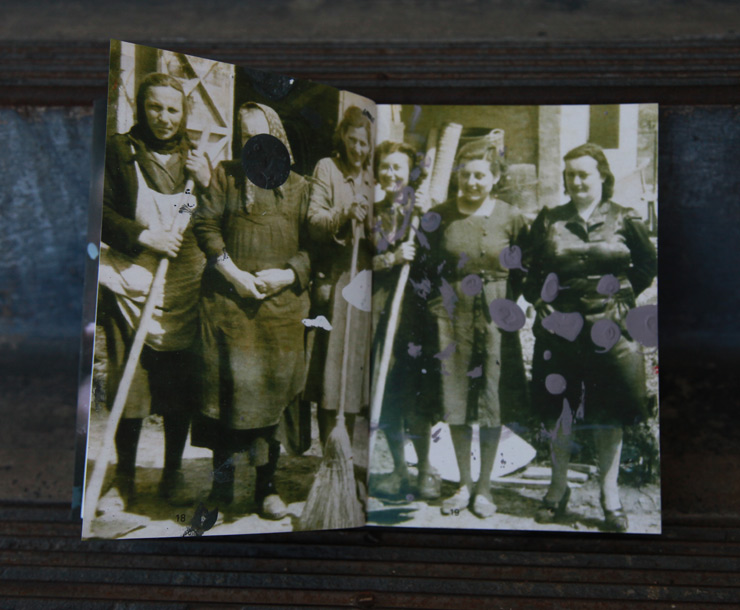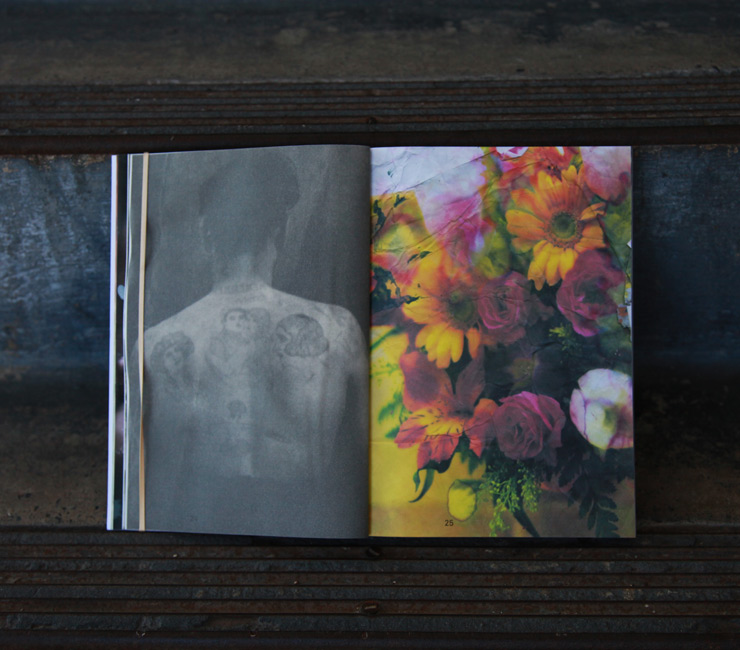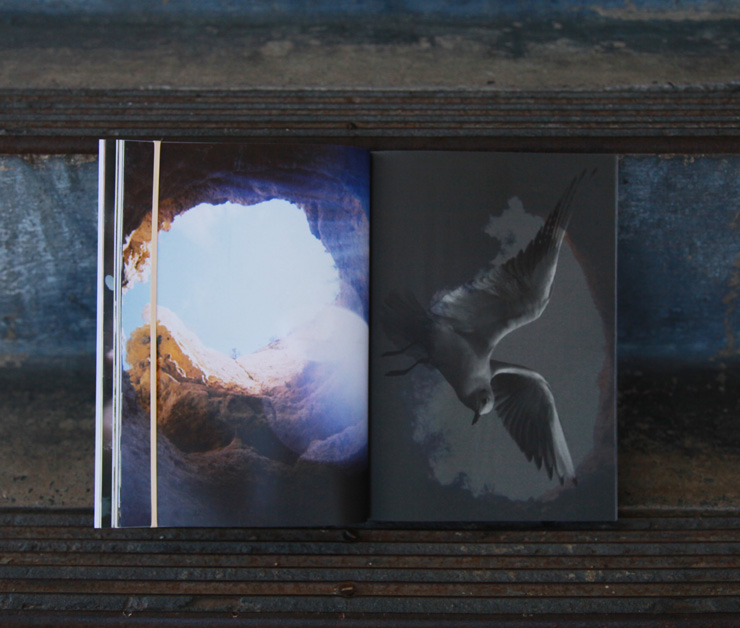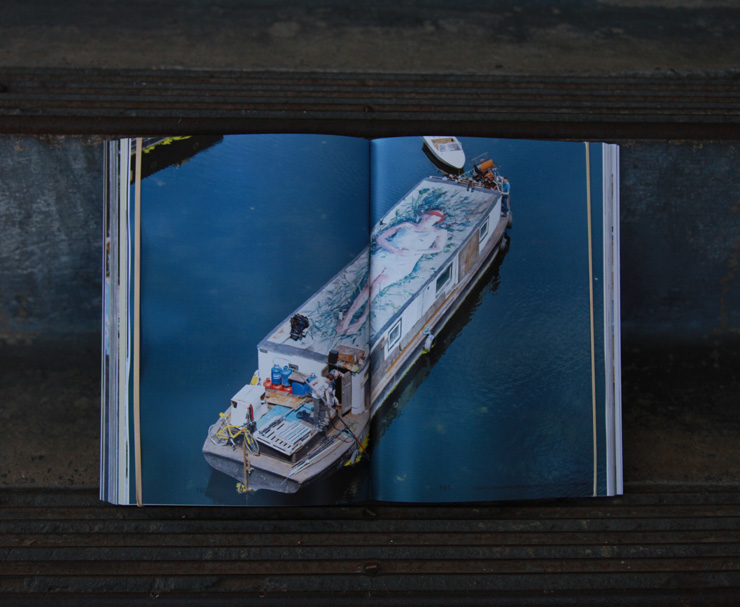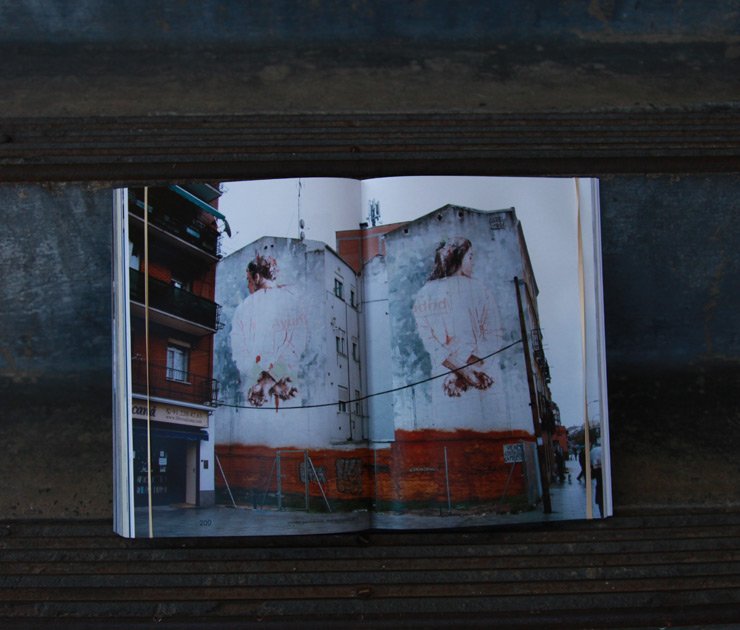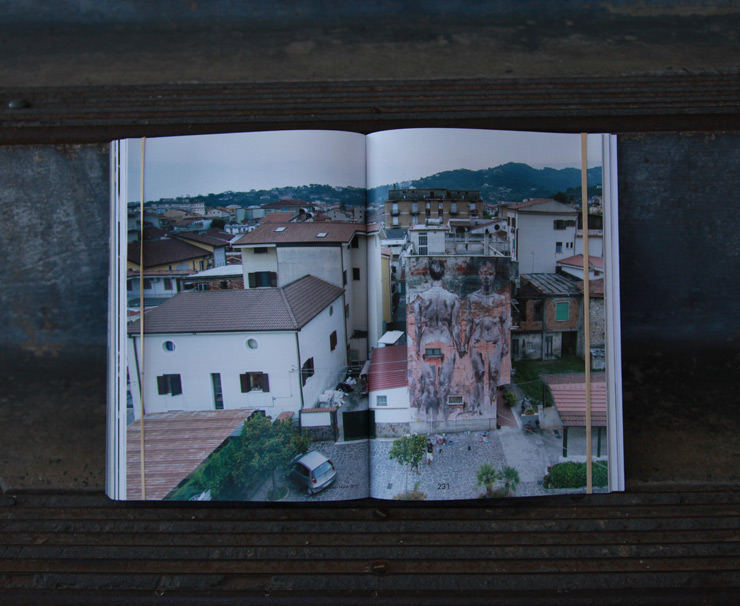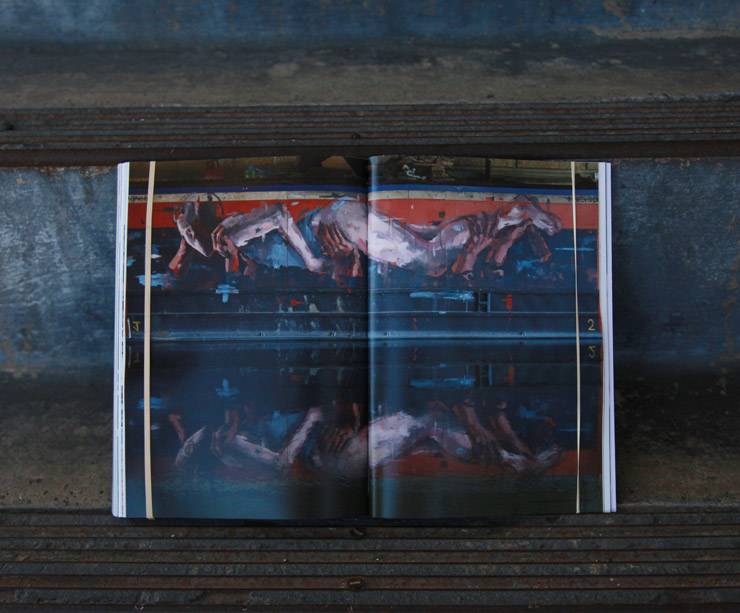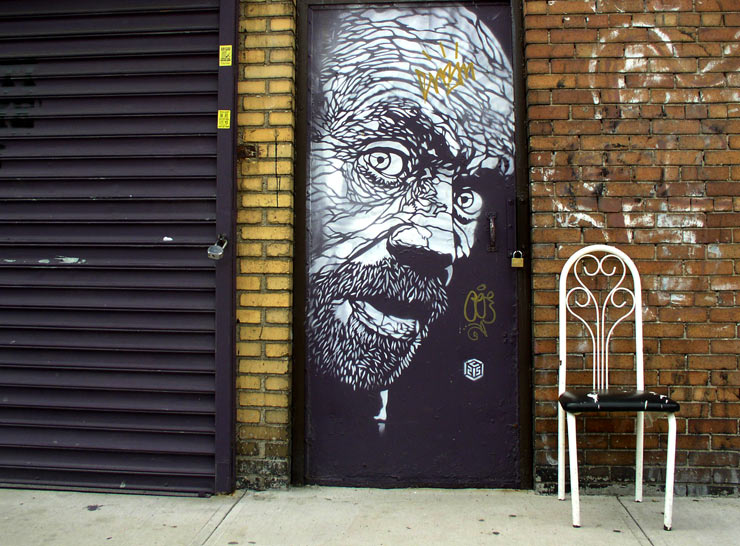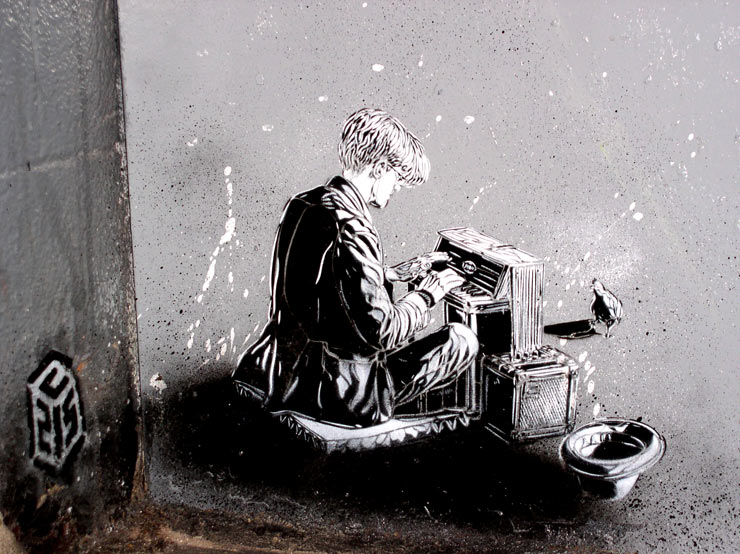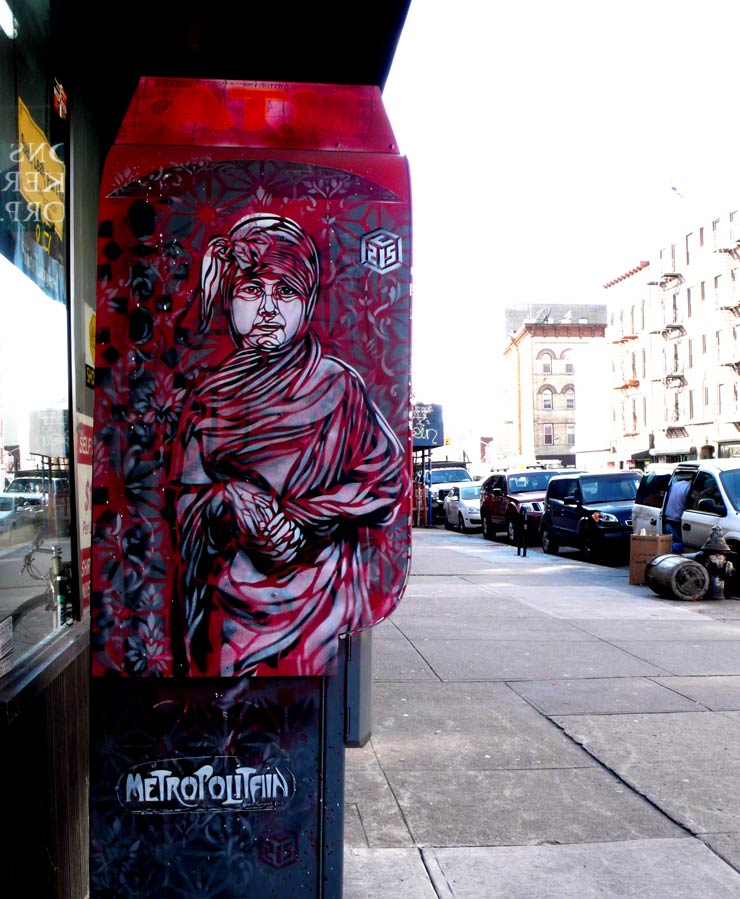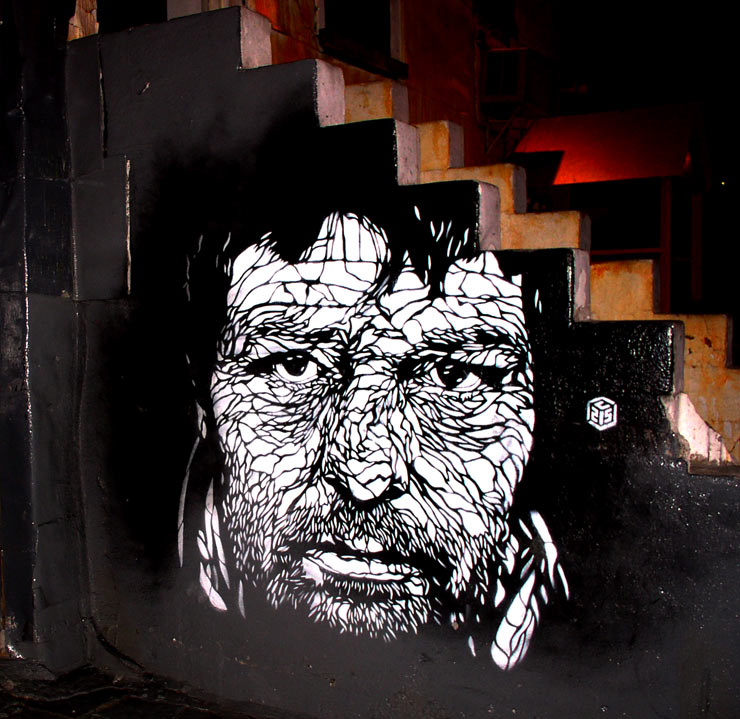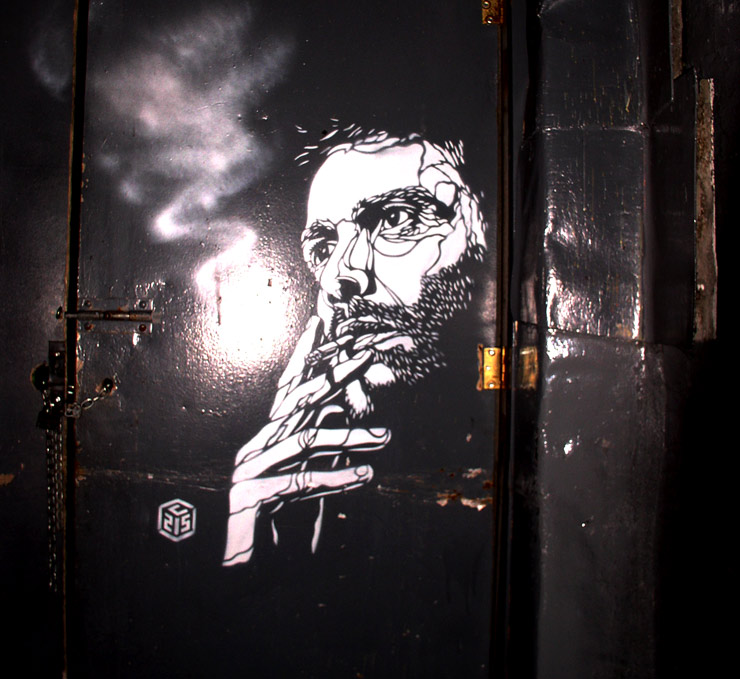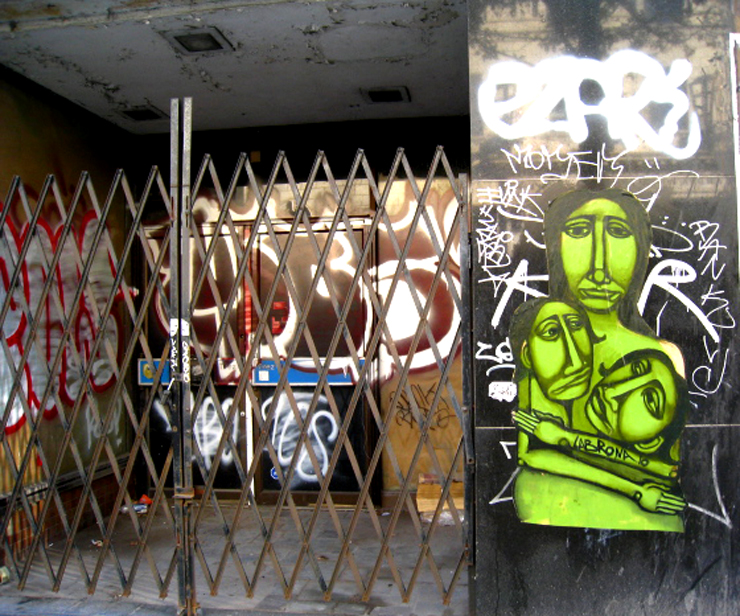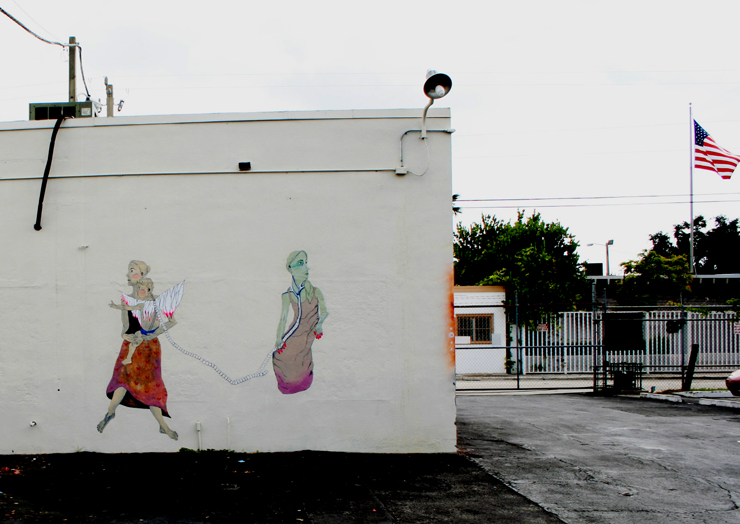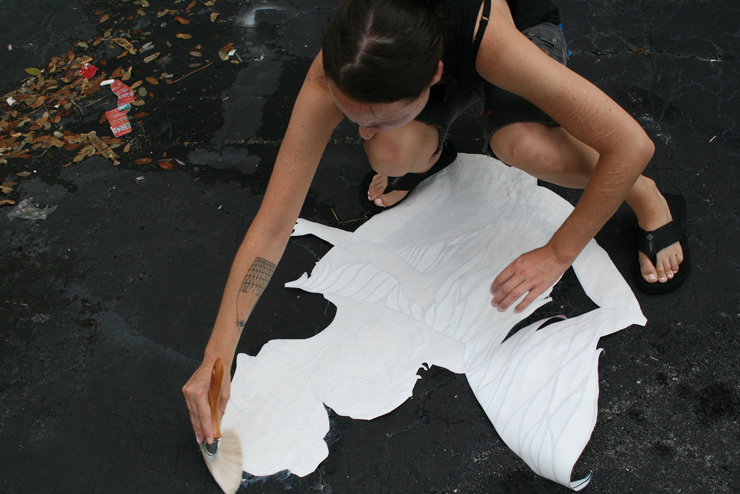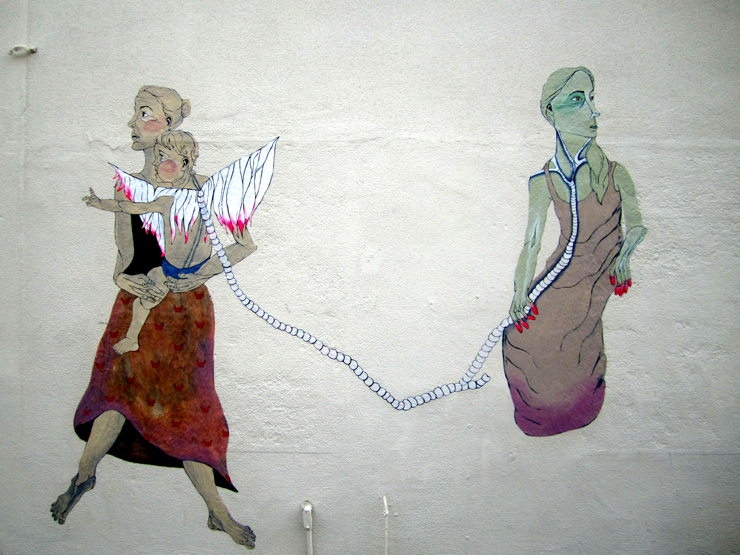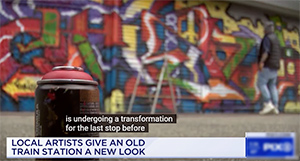“Graffiti ain’t something you do, it’s something you live,” says the text above a wildly lettered REVS piece in a 1996 photo taken in El Paso. If there is a New York graffiti/Street Art icon that you would identify with a credo like this, he’s definitely one. Self-secreted away from the limelight and distrustful of many of the characters that are on the graffiti/Street Art “scene” today, REVS is nearly a New York folk hero, despite appearing to be completely firm in his anti-establishment, anti-commercial views – rooted in punk and hardcore music and those values that helped form his sometimes shape-shifting character since the the 1980s.
REVLON, REVS, SHIESTA, AVENGE, FUCKING REVS, REVS SOUP, REVS NUKE…
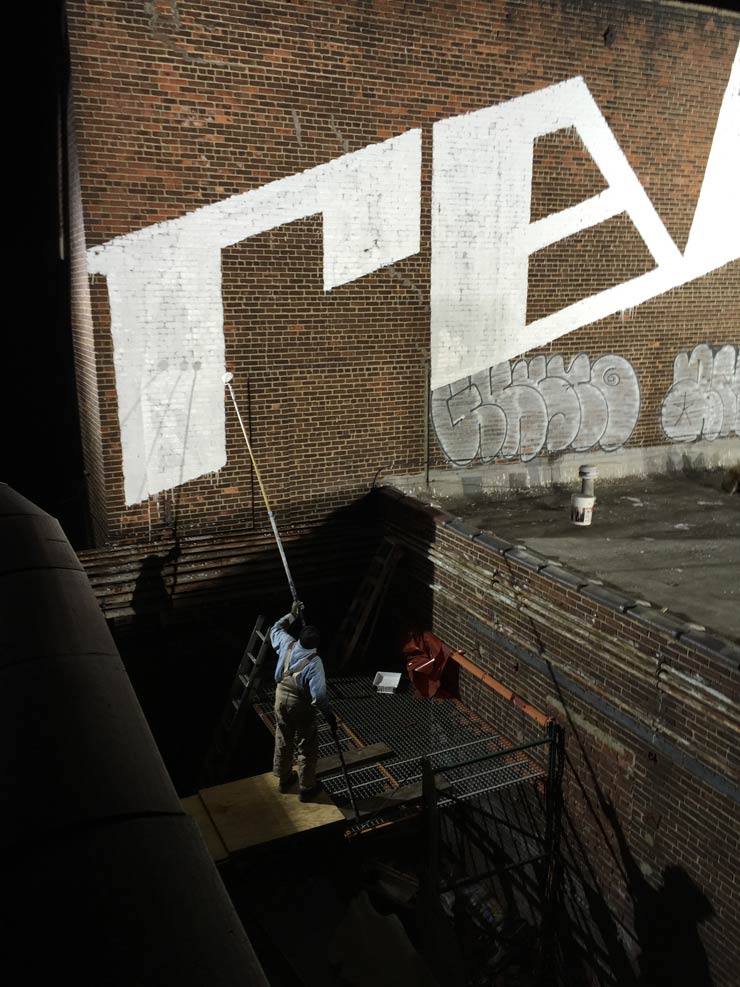
Today it is a rare moment for BSA to publish an exclusive interview with an anonymous and articulate thinking man and writer whose practice we consider to be an important lynchpin between graffiti and what would later be called “Street Art.” The scale of his massive roller tags with sometimes writing partner COST, the series of personal ‘diary’ entries that number into the 200s in underground tunnels, the replication and repetition of tags and messages through new print methods, the move to iron sculpture soldiered to the streetscape – each of these moves broke a mold and expanded the definition of art on the streets in some way.
New York author and respected Hardcore music and graffiti documentarian Freddy Alva is publishing the second edition of his book “Urban Styles: Graffiti in New York Hardcore” this month, where he gives you the full account of personally meeting with and interviewing the elusive writer/artist/musician – a generous portion of which we bring to you here today. Mr. Alva tells us what it was like to meet with REVS and speaks of the illuminating and wide-ranging REVs interview that gives details and perspective behind the lore in his evolution with aesthetic street expression in a way that is rarely heard. Our thanks to both of these folks for sharing their stories with BSA readers.
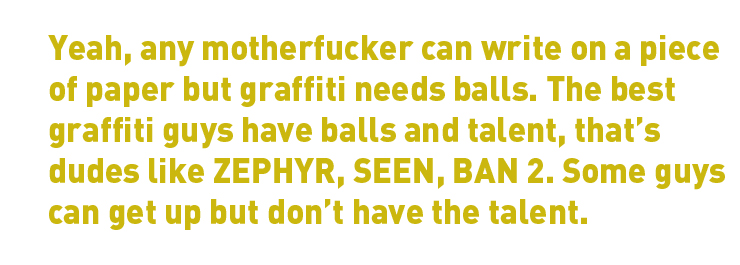
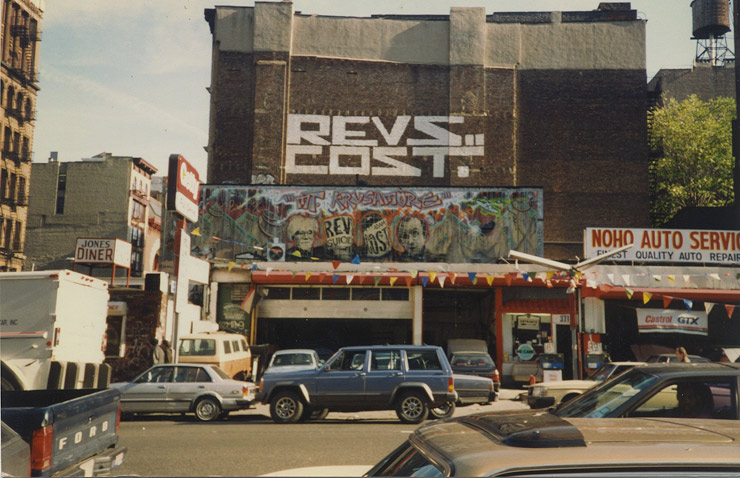
Intro from Freddy Alva
When I first started to write my ‘Urban Styles Graffiti In NYHC’ book in 2016; the first person on my list that I wanted to interview was REVS. I’d been a big fan of his output since the late
As I laid out my vision for the book and the writers that I was planning on interviewing plus images that I wanted to highlight; he patiently listened and towards the end politely declined to be included as he preferred to keep his story underground and maybe I didn’t quite correctly explain what the final product would look like but he did agree for a couple of songs from his early 80’s band Adam 12 to be included on a compilation I was planning on releasing simultaneously with the book. I left Brooklyn a bit dejected but respected his decision & figured that was it.
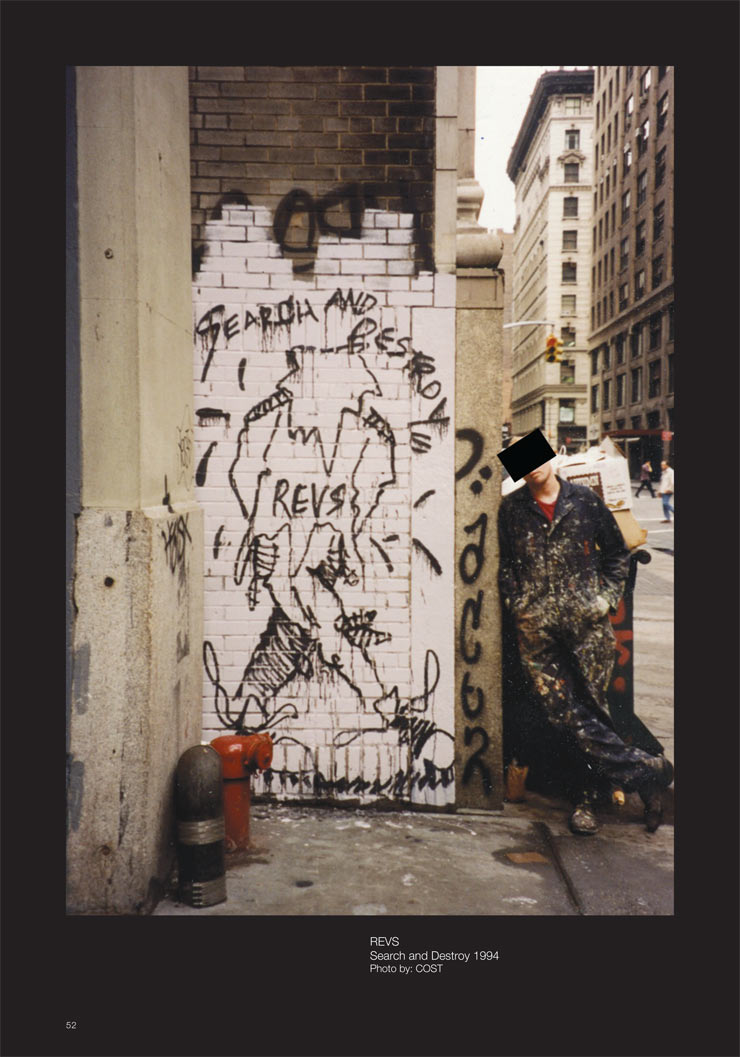
Flash forward to when the book came out in early 2018 and I got in touch with him again to return those Adam 12 songs that I used & also to give a him a copy of the book to see what he thought of it. He called me up the very next day saying how much he loved it & if there was any chance he could still be included. Fortunately, the book quickly sold out and I was planning on expanding the 2nd edition, as there was a chapter that was left off the first time around, plus correcting typos and fixing some of the photos so to add a REVS interview would make this the definitive version.
Like I stated in my intro to his section; people that follow him might not be as aware of how much his experience in being a Punk Rocker has really impacted all of his art in such a profound fashion. It’s unheard of these days, in what’s called the street art world, to have an artist of such magnitude and influence like REVS eschew all and any attempts to commercialize his output.
He will never sell you one of his works, there won’t ever be a gallery exhibition, he will not do any commissions and forget about any merchandise/marketing related to him. One need not look any further than the defiant, middle finger, fuck you to the system attitude espoused by American Hardcore bands like the Dead Kennedy’s or the Do It Yourself ethics of subversive English Punks Crass; all resonating in his work throughout the years. I seriously consider him one of the last great NYC artists from the 20th century that got his start and influence from two rebellious subcultures that are near & dear to my heart. I feel fortunate to fill in some missing pieces, giving a more nuanced picture of who he is and why his art comes out the way it does.
~ Freddy Alva

What was your next tagging name?
The very first name I had was SATIRE and I probably got that from the Monty Python show on TV. I didn’t know what it meant, had no fucking clue, but I wrote it on an abandoned house with this kid that wrote RED and lived on my block
At what point did you start writing REVLON?
That started in 1983. After writing SIRO I might have been ME2 for a few weeks, then it was KIRK, took some bullshit tags in the village with that, nothing particularly good. I was hanging out with this guy D-ROCK, he was in a band called Cooker, known before as Weed or also Sacro 13; all the same band. He used to write and we would go on missions and also go to HC shows together all the time. He had a dope dancing style, kind of like John Watson. We were hanging out in my hallway one day and I went to the bathroom, saw this Revlon shampoo bottle while taking a piss and picked it up.
What can I tell you? I was young and stupid, I had so much hatred in me. I hated every fucking thing. I stuck with that for a while because I developed a good one line tag. It’s a horrible tag I know but I love animals and hate animal testing so this I again one of those contrary things that I’m against what the name stands for, like Adam 12. Another tag of mine is SHIESTA and once again I’m the complete opposite of that because I don’t shyster with people. I don’t like shysters, there is always this duality that goes with me.
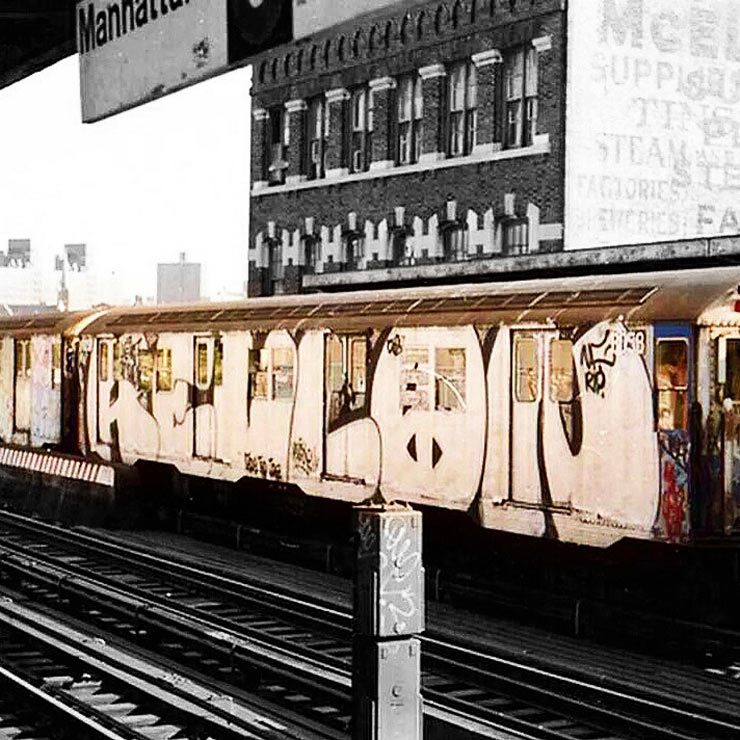
Did you do any burners on trains with the REVLON name or get down with any crews?
Yeah, we used to go to the 4th Avenue layups, the M yard, RR layups in the city. We also went to the ‘Dead Yard’ in Brooklyn on 39th street. Me and my partner NB were hitting tunnels pretty extensively in 1983. I never joined any crews.
At what point did the REVLON name transition into REVS?
That happened in 1987. We were painting at King Kong’s cave in Brooklyn where the N train goes to Coney Island. I was doing a wall with LAW and EROS from Staten Island, plus my partner at the time, KAB, and NIKE from DESTINY crew. I did a REVS because REVLON is a such a horrible stupid fucking name. I abbreviated it and put a Z at the end because I was sick of REVLON. By 1990 I was a nowhere guy, like that Reagan Youth song, “Go Nowhere”, that was me. I just threw the rule book out the door and didn’t give a flying fuck about making straight lines in graffiti. I just wanted to destroy like Johnny Lydon and I never looked back because I feel that I’m in my groove.

It’s interesting this transition happened when graffiti in NYC changed after the train era and new techniques, like wheat paste posters, in street bombing became more prevalent. You are associated with that, tell me about it.
I was walking down Houston near Mercer one day and saw some stupid poster for a Tom Cruise movie and I was like; ‘Fuck this, I’m gonna do my own thing’. I figured it out, got wheat paste and started going out solo, putting my posters up in the Village. This is in 1990 or maybe 1989 because I had my first girlfriend in 1988. She was Porto Rock and wasn’t hearing about any of this graffiti shit. I couldn’t be a bum, had to dress nice and take her to dance clubs like 10-18. That was fun, going to places like The Palladium, got to do what you got to do sometimes! She actually ended up running away with a sailor and moved to Hawaii. I was like; ‘Fuck this, fuck everything’ once again. I started doing these crazy sloppy rollers with the wheat paste because everything at that point in graffiti was so meticulous in 1990. Perfect straight lines, right angles… I was like; ‘nah, I hate everything’.
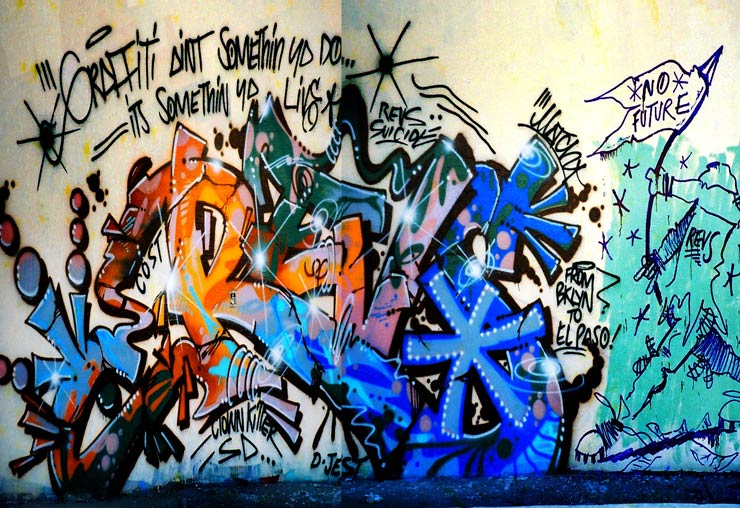
People must have have thought you were putting up movie posters when you went out. How did you hook up with COST?
I would do low spots like doorways and one day I saw COST hitting all the backs of the ‘Don’t Walk’ signs on the street and I knew him since like 1985. He was putting these 8 ½ x 11 inch ‘Hello My Name Is COST’ posters and I was doing 11 x 17 inch ‘Who Is REVS’ posters. I ran into the dude from Videograf and told him to give COST my number.
Where did the idea to do rollers come from?
I think LAW and EROS used bucket paint for their piece at King Kong’s cave but they did it as fill-in material. The concept of “John Loves Mary’ written on the side of a bridge with house paint also influenced me but I took it on steroids. I’m a white dude that likes tools, got to use tools, it’s part of my nature. I can physically do some stuff but I’ll always settle for doing something smarter not harder. I got an extension pole, like 24 feet long, for the roller me and COST did. We did our first roller on a parking lot by Duane St, right on the roof. It was a brown roller on a tan wall.
COST is a straight up graffiti dude, he’s a bomber, that’s what he knows how to do. Don’t ask him to draw anything. He can probably do a piece but he’s great at throw-ups and tags. He’s not into abstract work, but when we did that roller a lightbulb went off. We blew up the whole spot, no one could go over us. It was a sloppy roller but to his credit, he’s a very neat guy and meticulous. He cares about perception, wants to get feedback. I don’t care, just don’t go over me, say whatever you want. He was like; ‘Yo Rev, we got to make these things neat, make them clean and everything’. I was like ok; I can go with the flow so when we started doing that’s when it really took off. We started hitting everywhere and these things look pretty good, almost semi-pro lettering, kind of like a stencil.

I know spray cans are easy to rack, but how did you get all these gallons of paint and wheat paste?
Wheat paste was cheap. I always worked, been working since I was 11 years old so I had money for buying wheat paste. We found on Reade St. an old paint store that had like a gazillion DOT (Department Of Transportation) yellow standard buckets and I bought every single one for like a dollar a piece. This is the DOT yellow that I used before meeting COST. I ran Houston and Broadway with a DOT yellow piece. We also used whatever we found in the garbage, didn’t care it was oil based, we are not painting someone’s house but just blasting as much as possible. We found Photo Backdrop paper in Soho and started doing what we called street paintings on them, then gluing those up. They were 4 x 6 feet tall. We started doing street paintings where you paint the doorway and then take some shoe dye, put purple in the dye, then do my character. COST was doing his stick figures thing and we ventured out to the outer boroughs as well.
I imagine you guys started garnering attention as far as this is something, it’s not like traditional graffiti from the 70s/80s. What did other writers think of it?
Writers didn’t like it. COST came up with the idea of getting a toll free phone number and then got his grandmother to record some foul language messages, insulting people. People were like; ‘What is this shit? That ain’t Graffiti!’ When dudes saw one of our rollers outside of, like Tower Records, or in Soho, they’d be off balance not knowing what to think. All their shit in the bottom didn’t mean anything anymore.
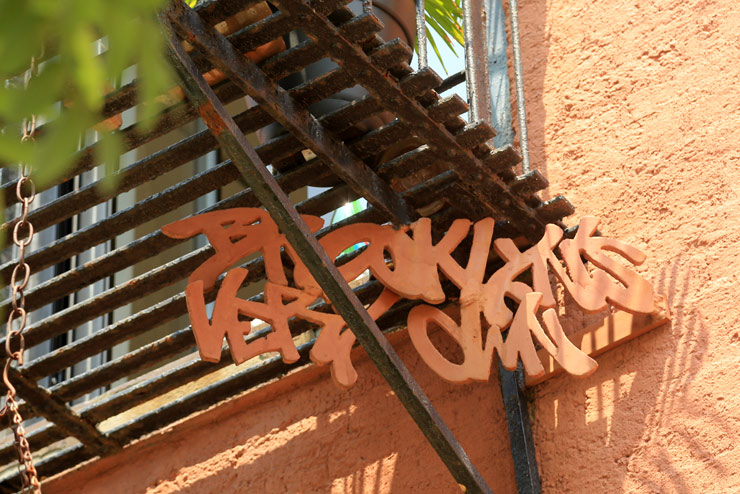
It’s ironic because traditional art theory people would look at this as some kind of performance art and graffiti writers would say what is this?
They would say what is this toy shit? How come you’re not using spray paint? Regular people would call up and ask what is this about. It was mysterious but we were just two graffiti guys.
I was tracing the origins of the whole ‘Street Art” moniker and arguably; a lot of it can be traced back to what you guys were doing then
Oh yeah it can. Street art has been around for a while but they didn’t really call it that, like the dude that put the shadows up everywhere. Then it was the ‘Kill Your TV’ guy. We started calling it street art and now it’s a bad word, at least amongst graffiti writers. It’s not a bad word for the people making money off it. I don’t call it graffiti anymore but “Greed-Fitti.” Once you throw money into something it has a way of making things go weird. All these dudes are selling things because there’s no real graffiti anymore. They took away the trains, buses, handball courts, the parks. Guys play with the tunnels now, RD and SEN 4 have the fire hydrants but we’ve got virtually nothing. Maybe some overpass by the freight trains. All of us still have the itch and being grown men now, we could do a good job. Everyone has a family with mouths to feed so they’re selling everything and calling it graffiti but it’s only graffiti when it’s up.
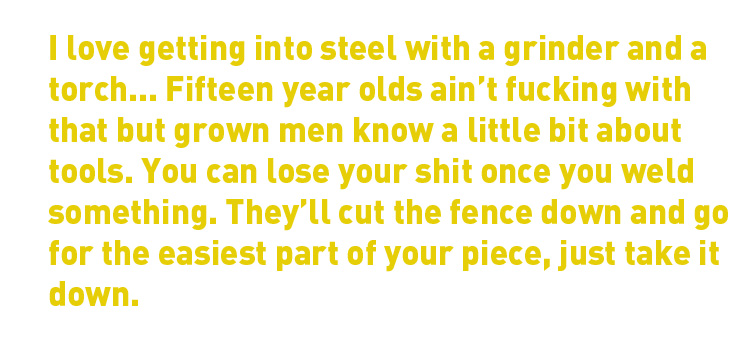
When did the rollers and wheat pasting era come to an end for you?
Me and COST would argue a lot. We’d have these crazy discussions because we were together so much and have way different philosophies on life. I had to put my foot down otherwise he would have printed t-shirts to sell in Macy’s or something like that. One day we were wheat pasting and it ended up with us saying ‘Fuck You’ to one another. We went our separate ways but cops were trailing him because he was putting up a lot of stickers. Whenever we’d do a roller, he’d bring cans and do throw-ups. I didn’t want to do that because I don’t like spray paint anyway, but love tagging.
Is that when you started your series in the tunnels?
Yeah, any motherfucker can write on a piece of paper but graffiti needs balls. The best graffiti guys have balls and talent, that’s dudes like ZEPHYR, SEEN, BAN 2. Some guys can get up but don’t have the talent. The tunnel thing was a case of I don’t give a flying fuck, I’m going to do whatever I want to do, don’t care who sees it. It’s not in book form, just made that shit up as I went along. I can’t spell. I was going with bucket paint and a ladder all painted black, clothes were black, pole was black. I used the best quality paint I could get my hands on and did 235 of these series. I didn’t get my groove on.

At what point did your steel sculptures come about?
I don’t call them sculptures, more like metal pieces. DIVA used to call them weld-ups. I come from the working class so I build stuff. The first weld-up I did was in 1990 and it was a cage that I installed in Soho with railroad spikes and some epoxy on the bottom. It ran for a couple of months and then I did another one by the cube on St. Marks. It was an oil can that was for the Gulf war in 1991. Me and CZ, who I used to write with, humped that thing from my third floor apartment on the Lower East Side.
I started to get more into welding and even when I was hanging with COST I would tell him to get a book to get the concept of welding. He was like, ‘Nah REV, it’s not the right time.’ He doesn’t come from the working class, has a different background. I got down with my union and started getting better at welding, practice in anything will make you better. I got balls and you combine that with being good at something; this is the shit I’m into. I love getting into steel with a grinder and a torch. It’s so easy to get a rechargeable grinder now but they didn’t have them back then and now everyone is forty years old. Fifteen year olds ain’t fucking with that but grown men know a little bit about tools. You can lose your shit once you weld something. They’ll cut the fence down and go for the easiest part of your piece, just take it down. That’s where I’m at, trying to device ways to make it hard to take down and they’re looking for ways to stop me.
I remember at the time you and COST were doing stickers and the 12” cover cover seemed an extension of that as the cover looks like one giant REVS sticker
I can see why you say that but the cover wasn’t a sticker, it just looks like one. That’s the difference between me and COST. The 12” was a personal thing to me not some kind of mass media campaign. I didn’t give a shit about becoming anybody. That’s the great thing about the Adam 12 guys, none of us wanted to become anybody, that’s why I like those guys. Other dudes like the Greed-fitti guys always want to become somebody, they want to be the next Andy Warhol, Keith Haring or Basquiat.
That’s the problem because the Greed-Fitti guys don’t come from punk. They don’t come from ‘Fuck you, stay the fuck away from me’. I’m not left wing, I’m not right wing, just stay the fuck away. That’s the punk I know and grew up on and when things started changing in 1984, it was disheartening. The machismo, why have violence against your own people? As Jello (Biafra) says; ‘Thrash a bank if you have the balls’. Why fuck with your own kind, back then everyone got along except for maybe there was a hippie or two that got beat up at CBGB’s.

Our sincere thanks to Freddy Alva and REVS and the photographers in this posting. This interview has been edited for brevity. Read the entire interview in book “Urban Styles: Graffiti in New York Hardcore”
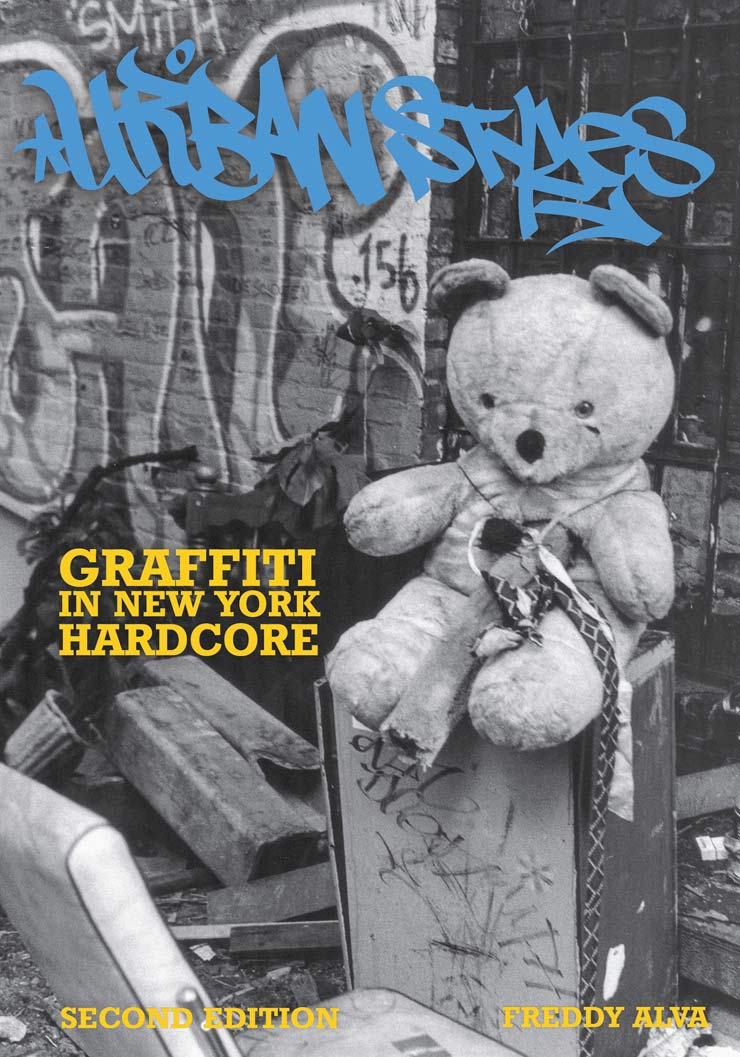
 BROOKLYN STREET ART LOVES YOU MORE EVERY DAY
BROOKLYN STREET ART LOVES YOU MORE EVERY DAY